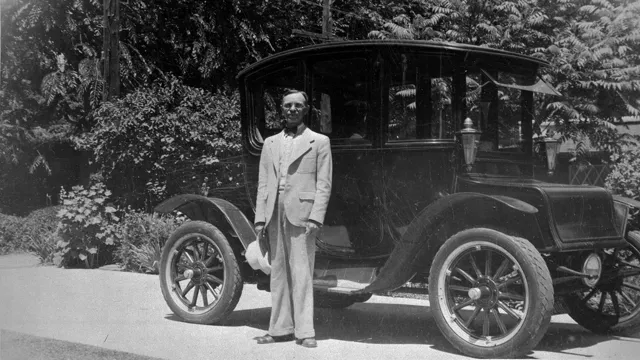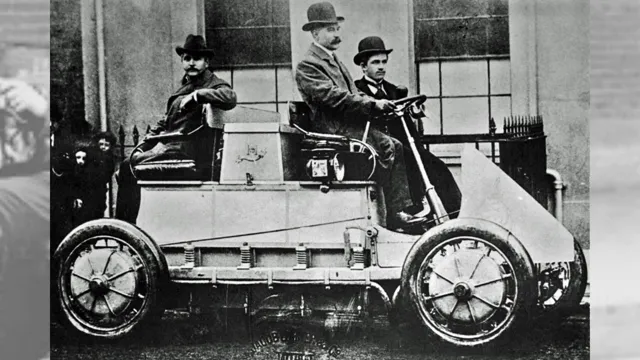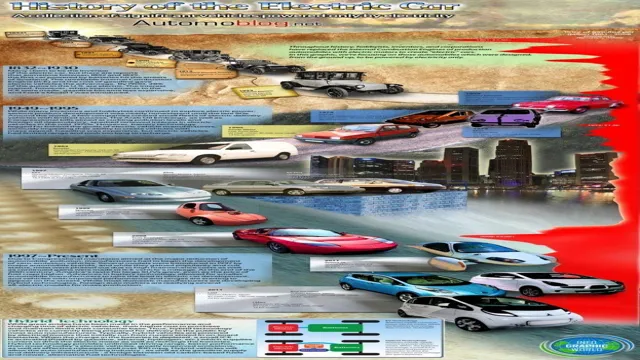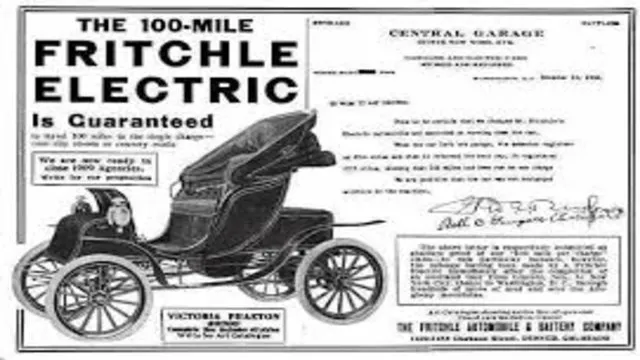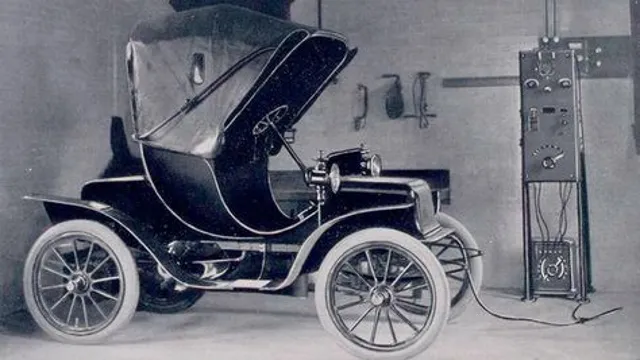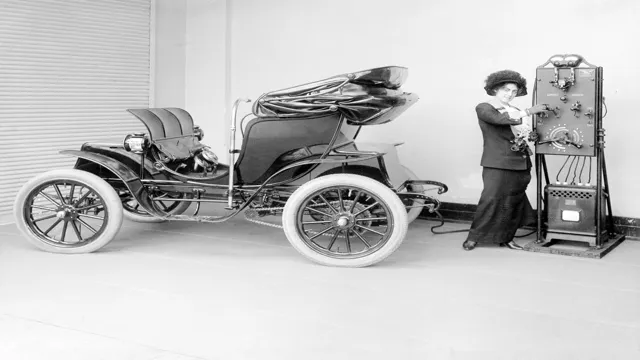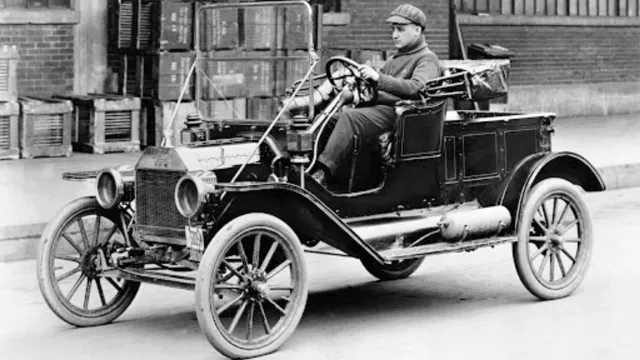Revving up the Past: A Brief History of Electric Cars
Electric cars have been around for over a century, but their popularity has only recently started to skyrocket. It’s hard to believe that the concept of electric vehicles dates back to the late 1800s when inventors were experimenting with battery-powered cars. Fast forward to present day and electric cars are becoming more prevalent in the automobile industry.
In this blog, we’ll take a closer look at the brief history of electric cars and how they’ve evolved over time. From early electric prototypes to present-day mass-production, electric cars have come a long way and are now a viable option for many drivers. So, buckle up and join us on this journey through the electrifying world of automobiles.
Early Development
The history of electric cars dates back to the 1800s, where inventors experimented with various types of batteries to power vehicles. In 1832, Scottish inventor Robert Anderson created the first crude electric vehicle that used non-rechargeable primary cells. However, it wasn’t until the 1880s when electric vehicles became more practical, thanks to technological advancements like rechargeable batteries and the invention of the electric motor.
During this time, electric cars grew in popularity and were even used as taxis in major cities like London and New York. Yet, by the early 20th century, the rise of gasoline-powered cars and the discovery of oil reserves made electric vehicles less attractive, and they slowly faded from mainstream use. Despite this decline, electric cars remained a viable option for certain niche markets, such as forklifts, golf carts, and small household appliances.
Only in recent decades, with the growing concern over climate change and the depletion of fossil fuels, has there been a renewed interest in electric cars.
1830s – first electric carriage invented
In the 1830s, the world witnessed a significant advancement in the automobile industry – the invention of the first electric carriage. It was a noteworthy milestone that marked the start of a new era of transportation. The origins of electric vehicles can be traced back to inventors and scientists who experimented with creating a mobile energy source.
The breakthrough came in the form of a rechargeable battery, which led to the development of electric-powered vehicles. Although the first electric carriage was primitive and not widely adopted, it set the ball rolling for future innovations in the sector. The electric carriage showcased the potential of electricity and how it could be harnessed to power automobiles, laying the groundwork for future advancements in hybrid and electric vehicles.
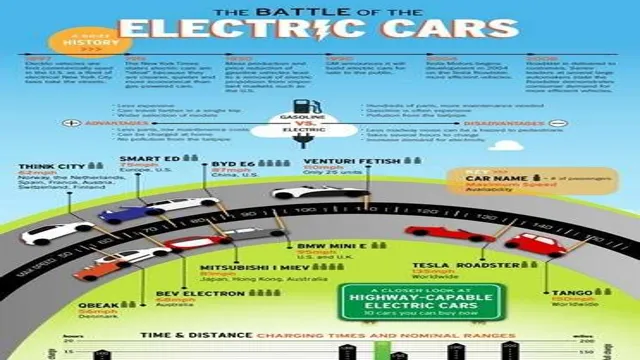
1850s – rechargeable battery invented
The 1850s marked a turning point in the world of batteries with the invention of the rechargeable battery. This breakthrough opened a slew of new possibilities and areas of exploration for both scientists and consumers alike. Early models of rechargeable batteries were quite basic, but they served as the foundation for the more refined batteries we use today.
It’s amazing to consider just how far batteries have come from their inception and how much they’ve helped us advance in various fields. Although we often take them for granted, batteries make our lives easier, allowing us to power everything from light bulbs to cars. In fact, it’s hard to imagine a world without batteries.
But without the early developments made in the 1850s, who knows where we’d be today? It’s a testament to the ingenuity and endless curiosity of humans that we can create something as transformative as the rechargeable battery.
Advancements & Setbacks
The brief history of electric cars is one filled with both advancements and setbacks. Electric cars were first introduced in the late 1800s, but it wasn’t until the 1990s that they began to gain widespread attention. The early electric cars had many limitations, including limited range and slow speeds, which made them impractical for most people.
However, advancements in battery technology and electric motors have made electric cars much more practical and efficient. In recent years, there has been a boom in electric car production, with major automakers investing heavily in the technology. Despite this growth, electric cars still face challenges, including the high cost of batteries and the limited availability of charging stations.
As we continue to make progress in developing these cars, it is likely that these issues will be addressed and we will see even more advancements in the future.
1890s – electric cars outsell gasoline cars in the USA
The 1890s marked a significant turning point in the history of automobile manufacturing as electric cars outsold gasoline cars in the USA. This era was characterized by immense advancements in car technology, which made electric-powered vehicles more appealing to consumers than gasoline-powered ones. Manufacturers began fitting motors with better batteries, which resulted in greater efficiency and range.
However, despite these advancements, electric cars were not without their setbacks. One significant setback was the lack of charging infrastructure in cities, making it challenging to recharge your vehicle after exhausting the battery. As a result, gasoline-powered vehicles remained popular in rural areas where there was no access to electricity.
Nonetheless, electric cars enjoyed a resurgence in the late 1990s, with the introduction of hybrid vehicles, which combined the efficiency of electric vehicles with the power of internal combustion engines. Today, the popularity of electric vehicles has continued to grow, with governments around the world offering incentives for their adoption as part of efforts to curb greenhouse gas emissions and reduce pollution.
Early 1900s – improvements in gas engines lead to the decline of electric cars
During the early 1900s, advancements in gas engines led to a decline in the popularity of electric cars. The newfound efficiency and power of gasoline allowed for cars to travel longer distances at higher speeds, making them more practical for widespread use. Additionally, the growing availability of gasoline and the lack of charging infrastructure for electric cars made gas-powered vehicles more accessible.
However, this setback for electric cars did not mean the end of their development. In fact, electric cars continued to evolve, and with the rise of concerns over environmental impact and sustainability, they are once again becoming a popular and desired mode of transportation. As technology continues to advance and battery technology improves, electric cars are poised to play a significant role in shaping the future of transportation.
1990s – General Motors releases first electric car in response to California emission regulations
The 1990s saw significant advancements and setbacks for electric cars. One of the most notable advancements was General Motors releasing their first electric car in response to California emission regulations. The car, called the EV1, was only available to lease and had limited availability.
Despite receiving positive reviews from those who drove it, the EV1 was ultimately discontinued in 2003, much to the disappointment of electric car enthusiasts. This setback was likely due to a combination of factors, including high production costs, limited driving range, and the lack of infrastructure for charging stations. Nonetheless, the release of the EV1 marked a significant step forward for electric cars and demonstrated that major automakers were investing in the technology.
Today, electric cars have come a long way, with improved technology, longer driving ranges, and a growing infrastructure of charging stations. It’s fascinating to think how far we’ve come since that first electric car from General Motors in the 1990s.
Recent Developments
Electric cars have been around for quite some time, with a brief history dating back to the 1800s. However, it wasn’t until the 21st century that they began gaining popularity. In recent years, there have been significant developments in electric car technology, with companies like Tesla revolutionizing the industry.
One of the most notable changes has been the improvement in battery technology, allowing electric cars to drive for longer distances without needing a recharge. Additionally, the availability of charging stations has increased, making it easier for electric car owners to find a place to charge their vehicles. Another significant development has been the introduction of more affordable electric cars, such as the Nissan Leaf and the Chevy Bolt, making them accessible to a wider range of consumers.
As the world becomes more environmentally conscious, electric cars are likely to continue their upward trend and further advancements in technology are sure to follow.
2008 – Tesla Roadster becomes first highway-legal electric car in the USA
In 2008, the Tesla Roadster made history by becoming the first highway-legal electric car in the United States. This significant development marked the beginning of a new era in the automotive industry and set the stage for the emergence of electric vehicles as a viable alternative to traditional gasoline-powered cars. The Tesla Roadster was a game-changer, boasting advanced technology and impressive performance capabilities that challenged conventional wisdom and proved that electric cars could be both practical and exciting.
Over the years, Tesla has expanded its lineup of electric cars and established itself as a leader in the industry, spurring innovation and inspiring other automakers to follow suit. As more and more people become concerned about the environmental impact of their daily activities, the demand for electric cars is expected to continue to grow, paving the way for a future where sustainable transportation solutions are the norm.
2010s – major automakers release electric models, including the Nissan Leaf and Chevrolet Volt
In the 2010s, the automotive industry saw a surge in the release of electric models from major automakers. Brands like Nissan and Chevrolet introduced game-changing electric cars such as the Leaf and Volt, respectively. This provided a step towards environmentally-friendly transportation and also offered drivers an alternative to traditional gasoline-fueled vehicles.
With time, more automakers began to take an interest in electric cars, leading to a more diverse market with various options for consumers. As technology continues to advance, we can expect to see even more electric models that offer longer ranges and faster charging times. As a result, the future of the automotive industry is leaning towards a greener, more efficient path, with electric cars at the forefront.
Future of Electric Cars
A brief history of electric cars reveals that they have been around for over a century. In fact, one of the very first cars ever made was electric. However, it wasn’t until the 1990s that electric cars began to make a comeback, with the introduction of models like the GM EV1 and Nissan Altra.
These early models were hampered by limited range and high prices, but advances in technology and a growing awareness of the need for cleaner transportation have led to a surge in popularity for electric vehicles in recent years. Today, electric cars are becoming more affordable and practical than ever before, thanks to increased battery range, faster charging times, and a growing network of charging stations. As a result, many experts predict that electric vehicles will be the future of personal transportation, as more and more drivers embrace the benefits of zero emissions, low operating costs, and a quieter ride.
Growing demand for eco-friendly vehicles
The future of electric cars looks bright as the demand for eco-friendly vehicles continues to grow. With concerns about climate change and the need to reduce greenhouse gas emissions, more and more people are turning to electric cars as a sustainable mode of transportation. Not only are electric cars environmentally friendly, but they also offer numerous benefits, including lower operational costs, reduced maintenance, and a smoother and more silent driving experience.
The shift towards electric vehicles is being driven by advances in battery technology, increased government incentives, and the efforts of automakers to improve the affordability and performance of electric cars. As more people recognize the benefits of electric cars, and as the infrastructure for charging these vehicles improves, we are likely to see a significant increase in the adoption of electric cars in the coming years. Electric cars are the future of transportation and will undoubtedly play a crucial role in reducing our carbon footprint and creating a sustainable future for generations to come.
Investment in charging infrastructure
Investing in charging infrastructure for electric cars is essential for the future of the transportation industry. As more and more people switch to electric cars, it’s crucial that we have a reliable and accessible charging network. Fortunately, there are already many initiatives in place to expand the charging infrastructure across the world.
In the United States, for example, the government has pledged to invest $15 billion in electric vehicle infrastructure over the next eight years. This investment will help reduce range anxiety and make electric cars a more practical option for daily use. Additionally, private companies are also making significant contributions, with charging networks like ChargePoint and Tesla’s Superchargers rapidly expanding to provide more charging options.
These investments are key to realizing the full potential of electric cars and transitioning towards more sustainable transportation.
Advancements in battery technology
With advancements in battery technology, the future of electric cars looks bright. Electric vehicles (EVs) have come a long way since their inception, and the improving battery technology is driving the EV market towards mass adoption. Lithium-ion batteries have been dominating the industry for a while now, but newer technologies such as solid-state batteries, which offer faster charging time, higher energy density, and potentially lower cost, are on the horizon.
These advancements will address one of the biggest concerns when it comes to EVs, range anxiety. As batteries continue to improve, EVs will soon match the range and performance of traditional combustion engine vehicles. Moreover, the cost of EVs will become more affordable, and consumers can expect a wider range of options.
In summary, the future looks bright for electric vehicles, and the continued advancements in battery technology will play a vital role in their mass adoption.
Conclusion
In conclusion, the brief history of electric cars reminds us that although the road to widespread adoption may have had its bumps, the future of sustainable transportation is electric. From humble beginnings in the 19th century to cutting-edge technology today, electric cars have come a long way. With a growing awareness of the impact our transportation choices have on the environment, we are at a critical turning point.
It’s time we embrace the electric revolution and charge ahead towards a cleaner, greener future.”
FAQs
When were electric cars first invented?
The first electric car was invented in the 1830s, but they did not become popular until the late 19th century.
How did electric cars compare to gasoline cars in the early 20th century?
In the early 20th century, electric cars were actually more popular than gasoline cars, especially in cities where they were quieter and easier to operate.
Why did electric cars decline in popularity in the mid-20th century?
The decline of electric cars in the mid-20th century was due in part to the invention of the electric starter for gasoline cars, as well as improvements in the internal combustion engine.
What has led to the recent resurgence of electric cars?
In recent years, concerns over climate change and air pollution, as well as advances in technology such as battery storage, have led to a renewed interest in electric cars as a cleaner and more sustainable form of transportation.
